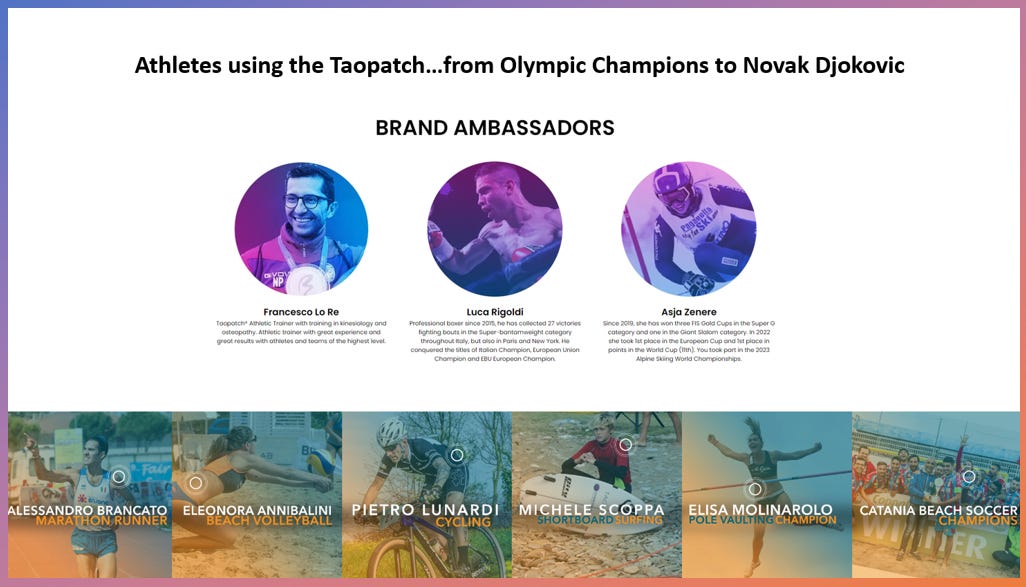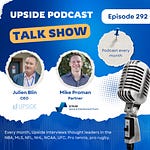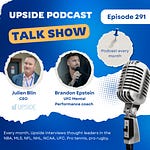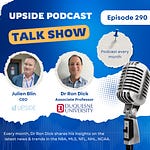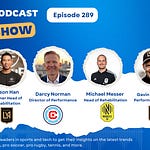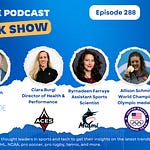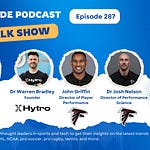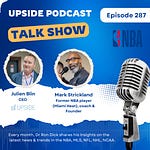This week, we have the honor to interview Dmitri Leonov, CEO of Taopatch USA, a wearable nanotechnology device that combines light therapy with acupuncture.
Taopatch USA built a patch which is a mix “acupuncture and light therapies”. It can help with different symptoms from improving posture, balance and flexibility, to boosting athletic performance and focus, and reducing stress, anxiety and chronic pain.
Picture: Taopatch USA
Taopatch USA has sold 350,000 Taopatch wearable units in the last 7 years. The device has also been endorsed by 2,200 physicians, and supported by 50+ clinical studies. As shown below, the Taopatch sports offering is available for $299 and can last for up to 2.5 years.
Picture: Taopatch Sports offering
Here is a video explaining how the Taopatch works:
The Taopatch is currently being used by Olympic athletes, pro soccer teams (Premier League), Tennis stars like Novak Djokovic.
📝Show Notes: Through this interview, we touched on his backgrounds, his company and product, the benefits for sports organizations and athletes to use their product. We also talked about Taopatch’s competitive advantage, business model and plans for the next 12 months.
🚀Best Quotes: Here’s some of the key discussion points and best quotes from our conversation with Dmitri:
On his background:
“I'm a serial technology entrepreneur, so I had a couple of different companies over the years in the technology space. And over the last couple of years I've been working on Taopatch and bringing the wearable technology into the US market and globally”.
On how the idea of Taopatch came about:
“So the inventor of the Taopatch is Fabio Fontana. And he came up with the idea years ago. He had a very serious injury himself, and he tried all sorts of different therapies and the only thing that helped him was light therapy, which is a really well studied form of medicine. If I'm not mistaken, there are something like 9,752 peer reviewed studies on PubMed's on light therapy”.
On how Taopatch works and how it helps patients with multiple sclerosis, Parkinson's and other neurological disorder, or athletes for sports performance, sports recovery:
“What Taopatch does is that it makes light therapy wearable. The issue with pretty much every light therapy devices out there is they're generally all stationary”.
“So here with the Taopatch, it is consistently applied, basically 24 7. Pretty much every other light therapy device needs electricity to function, whether it's plugged in or it needs batteries. And our unique advantage is that we've developed this nanotechnology material, which has a very unique quality”.
“It can capture the heat from your body, so your infrared energy. Then it stores it and then it reflects it back into your body as a broader spectrum of light. So it looks like a prism combined with a mirror. It stores it and disperses the light into a broader spectrum and puts it back into your nervous system”.
“And the other unique advantage that we've developed is that we place it on specific points on your body, which are connected with Chinese medicine and acupuncture. So through years of work, and we have a network of therapists, we've found optimal points that work for general wellbeing as well as specific protocols for different conditions from multiple sclerosis to Parkinson's and other neurological disorders to sports performance, sports recovery”.
“And then if there's an injury or pain, you literally just placed them on that specific point and it eliminates the pain”.
“So the way it works is you apply it using a tape. You can use any skin tapes, but we've developed a specific tape just for Taopatch”.
On how it helps athletes’ body function more efficiently. with better balance, and more energy:
“The other group of people that it's helping is athletes because with athletes every second counts. So having a nervous system that is more and more effective is very helpful especially for athletes”.
“With the sleep, there is a second order effect where your system is functioning more effectively, and so throughout the day you are functioning better and then you are able to rest better”.
“We have many different tools for measuring all sorts of different things in the body, but one of them is your balance, your range of motion, and just the overall movement of your body. And pretty much in every case, we can measure a statistically significant improvement”.
“And because you are more balanced, there's a lot less energy that's expanded and keeping your body balanced. So it helps more naturally. And so that saves a ton of energy for your body, which then just makes the whole system function better. And it's almost like drinking a cup of coffee”.
On how athletes typically use the Taopatch to help improve their performance and recovery:
“Athletes typically use the Taopatch for performance and recovery. And then as far as other use cases, we have a very wide spectrum of athletes who use it. For example we had five Olympic athletes in the last Olympic games. The European boxing champion is our spokesperson, Luca Rigoldi”.
Luca is using it for performance and recovery. It essentially makes you better, faster, stronger, and you see the impact almost right away for those athletes. We can always measure it pretty much immediately”.
On where the Taopatch is recommended to be placed on the body:
“So there are two points that we recommend as wellbeing points and that pretty much work for everyone. One is where Novak puts it on, on the sternum or your chest. And the second point is on your C7, the seventh cervical vertebra on your lower neck. We find that those are the two most common points”.
On their competitive advantages:
“One is the technology itself and the material. Obviously it's patented.
It's a very complex and very expensive process, which is why the cost of these things is not trivial. It doesn't look like much when you look at it. It looks like a coin. It also looks like native plastic really, but it's not, it's a very, very complex nanotechnology material, which would be very difficult to replicate”.
“And then I would say we have almost a decade of R&D where we've been optimizing and improving the technology itself and coming up with different protocols and we have fine tuned them over time. We are also working with tens of thousands of patients”.
On the types of teams, in addition to Olympic teams and athletes (Novak Djokovic, boxers, runners..), that they work with:
“So we are also working with soccer teams. We are actually not allowed to talk about the team, but it is one of the Premier Premier League teams. We also work with volleyball teams, and teams in motorcycle racing and car racing. So every sport where you need that extra second and concentration and focus, is where we come in. And we haven't really done a lot in golf yet, but it is also one of our focus”.
On their business model and support team:
“So our business model is very, very simple. You can buy our product, and you have the full support of our team. We have a very, very experienced and very helpful customer care team. One thing to keep in mind is that the patches work for two and a half to three years without any degradation of effectiveness”.
“So while it's expensive, our Taopatch sports product costs $300, considering that it works for over two and a half years it ends up being very, very efficient over time. And you can reuse it”.
“The people that we typically work with within sports teams are the trainers, physical therapists, head of rehab, people like that”.
On their plans for the next 12 months:
“So our plan is to expand into new sports. We've been very focused on the neurological disorders markets for the last few years. And very recently we started to expand into pro and amateur sports”.
“And especially with the latest news (Novak Djokovic), there is a lot of interest for sure from the sports side. But yeah, we are definitely focused on expanding and launching new products. We're coming up with new products as we speak”.
“We're not really looking to raise money at this point, and we are continuing to focus on R&D and product development as well as expansion and marketing”.
You may also like:
🔥 Upside Chat: Dave Hancock, CEO, Apollo (Leading Athlete Management Systems (AMS) vendor)
🔥 Upside Chat: Dr Andy Barr, Consultant, Brooklyn Nets (NBA) & Quantum Performance Founder
🔥 Upside Chat: Ismael Fernandez, ThermoHuman CEO
🔥Upside: AMS Ecosystem Analysis: Key Trends, Vendors and Recommendations to Teams
💦Upside Analysis: The sweat and heat sensing market (Key Trends, Vendors)





